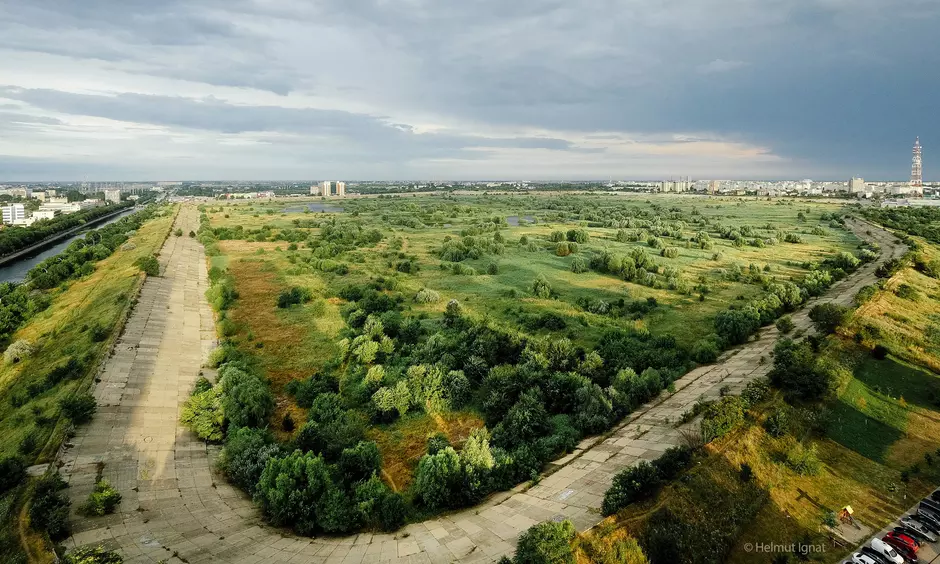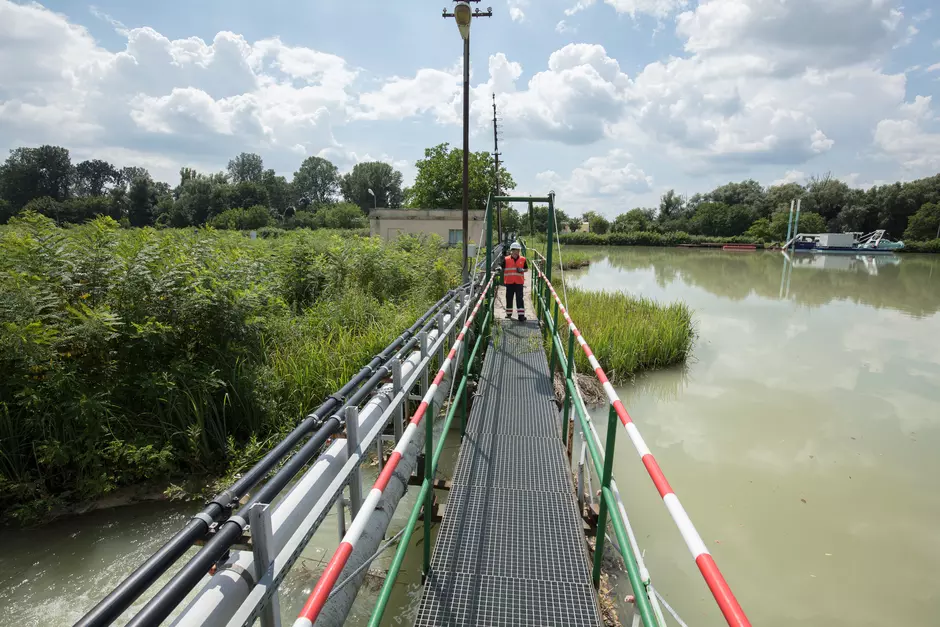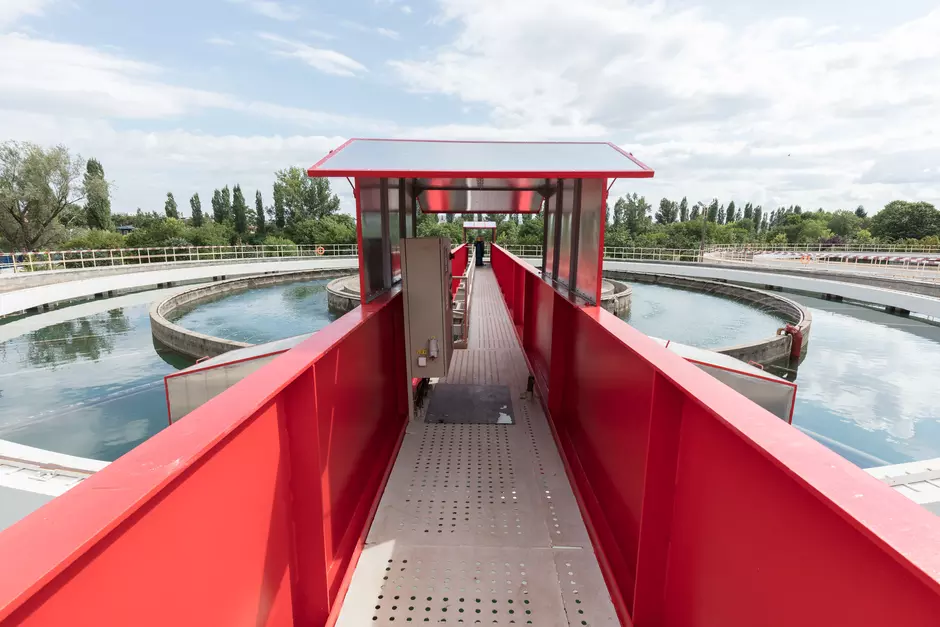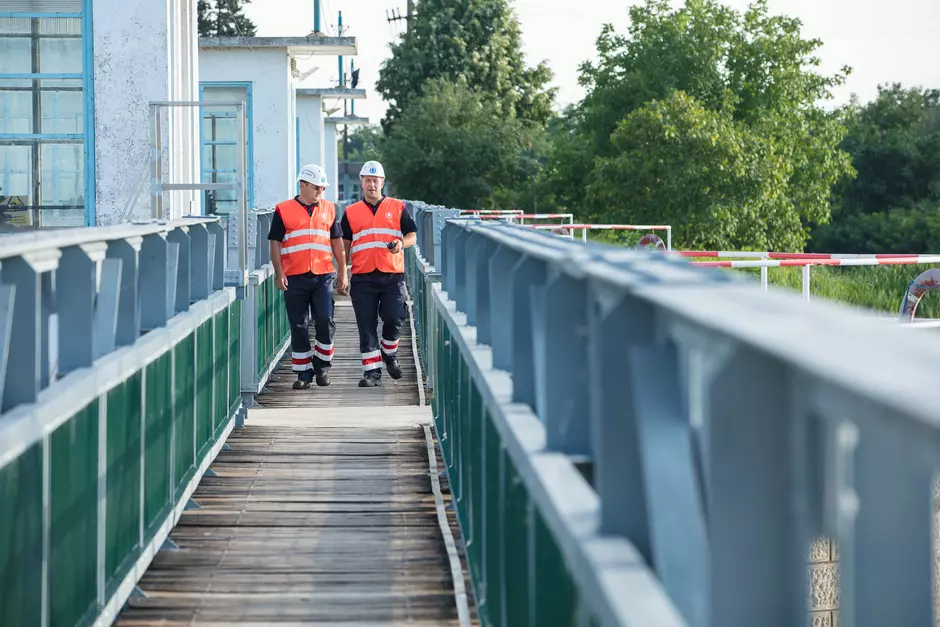VĂCĂREȘTI NATURAL PARK

Background
Văcărești Natural Park is a protected natural area of national interest in an urban environment. Nurtured by rainfall and underground springs, the park was formed over 30 years on the site of a former hydrotechnical project. A wetland, it covers 184 ha, comprising swamps, waterholes, reeds, willow thickets, poplar groves, and rushes.
Set up in 2014, the Văcărești Natural Park Association coordinated procedures to create the park. It was the official administrator of the area between 2017 and 2019 and since 2020 it has managed the park as the official partner of the Ministry of Environment and the National Agency for Natural Protected Areas.
The organisation’s objectives are to protect and preserve Bucharest’s largest green space and promote education for the benefit of the environment, while providing leisure options in a wild area in the capital.
The shrinking of the body of water and clogging of the existing waterholes, disappearance of or radical changes to fauna and flora, extensive deterioration in the water quality, intensive urbanisation, as well as climate change are just a few of the risk factors currently threatening the park.
Veolia’s objectives
Veolia is aiming to support a sustainable management plan, which includes real actions in this protected area to preserve nature and improve the quality of life in Bucharest, particularly in the vicinity of Văcărești Park (districts 3 and 4).
Given the major challenges the city is now facing, Veolia intends to develop and promote nature-based solutions (NBS) to capture, naturally filter and reconnect rainwater with groundwater, preserve and rebuild wetlands and increase the resilience of the protected area in the face of climate change.
The phases of this unique Bucharest project run for three years, through to 2023. The company also intends to promote these nature-based solutions among the community and key shareholders, through education and actions to raise awareness.
ARCUDA PLANT

Background
Commissioned 133 years ago, Arcuda Water Plant is the oldest and largest facility of its kind in Romania. Located in Giurgiu County, the plant is currently being exploited by Apa Nova, part of Veolia Group. The plant produces high-quality drinking water, is cost effective and eco friendly.
Only 17.3 percent of the surface area of Arcuda Plant is used for technological, administrative activities and utilities, with the remaining 82.7% made up of green space. Water treatment is a technological process that requires know-how, professionalism, teamwork and rigor. This is the only way to ensure constant access to a safe, high-quality product.
Arcuda has been designated a strictly protected area for public health purposes, as well as a favourable environment for plants and animals to thrive, and for habitats that are nationally and internationally recognised for their preservation value.
Measures
Apa Nova has carried out two research studies (over 2012-2013 and 2018-2020). The first sought to identify, map and describe the biodiversity within Arcuda Water Plant, while the second focused on assessing the preservation status of biodiversity across the plant’s perimeter, as well as its evolution.
Researchers identified an array of flora and fauna: three types of protected habitats (Natura 2000 habitats), nine types of plant communities, including three protected species at European level, seven herpeto-fauna species (four of community interest), 88 bird species (five of community interest and 12 of national interest) and 11 fish species.
The studies revealed the main challenges and their anthropic impact on local biodiversity, in response to which the company identified a series of measures to tackle the problems. Some have already been implemented, including installing informational billboards, transferring rare plants from habitats damaged by human activities, and removing invasive non-native species, such as Ambrosia artemisiifolia (Ambrosia).
Apa Nova worked on the studies with botany, avifauna and herpeto-fauna experts from the Association of Botanical Gardens in Romania, and Universities of Biology in Bucharest and Iasi.
Apa Nova employees were involved in the billboards’ concept design and graphics, and location scouting, while a dedicated team contributed to installing billboards, cutting, clipping and removing plants.
ROȘU PLANT

Background
Roşu Water Plant, commissioned by Apa Nova, is located in Ilfov County. The 13 ha plant is situated approximately 1.5 km from the right bank of the Dambovita River.
Water is collected from the River Argeș through the Crivina water catchment pipeline.
Roșu Water Plant includes wide open areas, covered in herbaceous vegetation, alternating with areas dominated by ornamental trees. The green surface accounts for approximately 63.2% of the total. The setup of the biotic and abiotic elements within the plant form multiple types of favourable habitats for fauna, while the southern side is an aquatic habitat (Argeș canal), and the rest of the perimeter is covered in herbaceous vegetation and trees.
Measures
In 2018, Apa Nova carried out a biodiversity audit within Roșu Water Plant. The project’s objectives were to identify habitats and species of local and national interest, as well as to take specific measures to protect and preserve them.
Through the project, Apa Nova identified a rare plant that features on the Red List of Threatened Species, 14 species of invertebrates, eight of herpeto-fauna (four species of amphibians of community interest and one of national interest, plus three species of reptiles of community interest), 32 bird species (five of community interest and seven of national interest) and six species of bats of community interest. The company also took steps to address the challenges affecting habitats and species.
Five informational billboards were installed within the plant’s perimeter, to promote the protected flora and fauna species, as well as their habitats. Shelters for reptiles and bats were also built.
Resources
The biodiversity audits were conducted from May to September 2018 by experts from EPC company (Environmental Consulting), specialised in plants, habitats and fauna, who had the required expertise to conduct a proper assessment of biodiversity and impact.
Apa Nova employees were involved in the design of the concept, graphics, location scouting and installation of the billboards, as well as in the design, location scouting, construction and installation of the shelters.
CRIVINA PLANT

Background
Crivina Water Plant, commissioned by Apa Nova, is located in Giurgiu County and covers 30.0 ha.
The water is collected from the River Argeș through the Crivina water catchment pipeline. The Crivina facility is dominated by wide open areas, covered in herbaceous vegetation and ornamental and fruit trees, found in the proximity of the building complex. The southern side of the perimeter, close to the catchment area, showcases a natural riparian habitat, situated on the banks of the River Argeș.
Green spaces account for around 65% of the total surface of Crivina Water Plant. The habitats that comprise the biotic space are favourable to a wide variety of fauna species, particularly amphibians, reptiles and birds.
Measures
In 2018, Apa Nova carried out an inventory and assessment of the biodiversity found at Crivina Water Plant. The field research revealed 28 species of invertebrates, including two of community interest, five species of herpeto-fauna (one amphibian and three reptile species of community interest), 39 species of birds (three of community interest and 11 of national interest) and six species of community interest.
The measures adopted have already been implemented. They include the removal of non-native invasive species, such as Ambrosia artemisiifolia (Ambrosia) and protection of wild bird nests. Shelters for reptiles and bats were also built to preserve existing habitats.
To raise awareness of the existing biodiversity and its importance, both among employees and potential visitors and tourists, informational billboards were installed in key areas.
Resources used
The biodiversity audits were conducted from May to September 2018 by experts from EPC company (Environmental Consulting), specialised in plants, habitats and fauna, who had the required expertise to conduct a proper assessment of biodiversity and impact.
Apa Nova employees were involved in the concept design, graphics, creation and installation of the billboards, as well as in the design and installation of the shelters.


